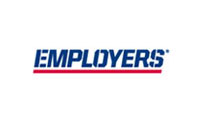
1.) PA Workers Comp Bureau puts out a Base rate on each class of job called a “Lost Cost/LC”
Example: The Electrical Wiring class in PA is class #661, the PA State Lost Cost rate is $3.43 per $100 of payroll
2.) Then each carrier files with the state a “Lost Cost Multiplier/LCM” for their company’s rates.
Example: One Hartford Company has a .73 LCM / National Casualty has a 1.553 LCM / One Liberty Mutual company has a 2.39 LCM
– So what these three carriers charge for Workers Comp works like this:
Hartford: .73 (LCM) X $3.43 (LC) = $2.50 per $100 dollars of payroll
National Casualty: 1.553 (LCM) X $3.43 (LC) = $5.33 per $100 of payroll
Liberty Mutual: 2.39 (LCM) X $3.43 (LC) = $8.20 per $100 dollars of payroll
– An Electrical Contractor that has a $250,000 payroll it would work like this:
Hartford’s rate of $2.50 X $250,000 in payroll = $6,250 Workers Comp Premium
National Casualty’s rate of $5.33 X $250,000 in payroll = $13,316 Workers Comp Premium
Liberty Mutual’s rate of $8.20 X $250,000 in payroll = $20,500 Workers Comp Premium
So here you have three carriers that are charging wildly different rates for the same contractor. The point is there are over 500 carriers that all have different filed LCM rates in PA so they all charge different rates for the same class.
***The other factor is in PA an individual Underwriter has the authority to increase the rates by 25% or give a credit on the rates by 25% depending on what they think of the account. You add these 25% changes up or down to the above carrier’s rates and the difference can be even larger***





























